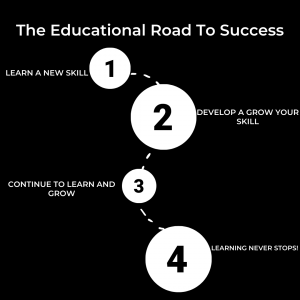What Are the Most Effective Networking Strategies for Career Growth?
In today’s interconnected world, effective networking strategies can significantly impact professional success. Building genuine relationships through active engagement and consistent follow-ups opens doors to various opportunities. Those who prioritize networking are often the ones who find themselves at the forefront of their industries.
Strategic networking goes beyond simple introductions; it involves meaningful interactions that foster trust and collaboration. Attending industry-specific events and utilizing online platforms can enhance visibility, enabling individuals to connect with like-minded professionals and potential mentors.
Moreover, being intentional about networking efforts can lead to valuable partnerships and career advancements. By integrating effective communication skills and a proactive approach, one can create a strong professional network that supports long-term growth and success.
Setting the Stage for Networking
Successful networking begins with preparation and effective tools that facilitate professional interactions. Two key components are an effective elevator pitch and well-designed business cards.
Crafting an Effective Elevator Pitch
An elevator pitch is a short, compelling introduction that communicates who someone is, what they do, and what makes them unique. It should be concise, ideally lasting no longer than 30 seconds.
To create an impactful pitch, one should:
- Identify key points: Focus on vital information such as professional background and specific achievements.
- Use clear, engaging language: Avoid jargon and ensure the message is easily understood.
- Tailor the pitch: Adapt it to the audience to enhance relevance.
Practicing the pitch will build confidence and reduce anxiety during networking events, making interactions more engaging.
Designing Professional Business Cards
Business cards serve as tangible reminders of a networking encounter. A well-designed card conveys professionalism and encourages future communication.
Key elements to include are:
- Name and title: Clearly state the individual’s name and professional designation.
- Contact information: Include a phone number, email address, and relevant social media links.
- Branding: Use consistent colors and logos that align with personal or business branding.
The card should be easy to read and visually appealing. High-quality materials and a clean design will leave a lasting impression, fostering connections in professional relationships.
Networking Techniques and Strategies
Effective networking requires a combination of active listening, strategic follow-ups, and utilizing social media platforms. These components help build genuine connections and maintain relationships over time.
Active Listening and Asking Questions
Active listening involves fully engaging with the speaker to understand their thoughts and perspectives. This technique fosters trust and rapport.
To practice active listening, one should:
- Maintain eye contact.
- Nodding occasionally to show understanding.
- Avoid interrupting until the speaker has finished.
Asking open-ended questions is equally crucial. Questions like “What inspired you to pursue your career?” invite the speaker to share more, creating deeper dialogue. This engagement not only shows interest but also provides valuable insights that can guide future interactions.
Follow-Up Strategies for Continued Engagement
Following up after an initial meeting is vital to reinforce connections. A timely, personalized email can leave a lasting impression.
In a follow-up message, include:
- A reference to a shared conversation point.
- A thank-you note for their time.
- Any relevant information they might find useful.
Setting reminders for follow-ups ensures no important connections fall through the cracks. Additionally, sending relevant articles or resources can demonstrate thoughtfulness and continued interest in the relationship.
Utilizing Social Media to Forge Connections
Social media platforms, particularly LinkedIn, are invaluable tools for networking. They enable individuals to connect, share content, and engage with respective industries.
Key strategies for utilizing social media include:
- Actively participating in discussions by commenting on posts within one’s field.
- Sharing insights and articles relevant to one’s network.
- Using direct messages to initiate conversations with connections.
Joining industry-specific groups can also expand networking opportunities, allowing for interactions with like-minded professionals. Engaging consistently on social media helps maintain visibility and relevance in the networking landscape.
Expanding Your Network
Building a robust professional network involves strategic actions. Key activities include attending conferences and workshops, joining professional organizations, and participating in volunteering or community efforts. Each of these avenues presents unique opportunities for connection and collaboration.
Attending Conferences and Workshops
Conferences and workshops are pivotal for networking. They bring together industry professionals, providing a platform for meaningful interactions. Attendees can engage in sessions that address current trends and challenges.
Networking opportunities arise during breaks, panel discussions, and informal meet-ups. To maximize benefit, individuals should prepare by researching speakers and participants beforehand. Following up with new contacts via email or LinkedIn enhances relationships built at such events.
Consider keeping a list of industry-related conferences and workshops to attend annually. This ensures continued exposure to new ideas and potential collaborators.
Joining Professional Organizations
Joining professional organizations is another valuable strategy. These organizations often curate events and resources tailored for specific industries. Membership provides access to exclusive networking opportunities, mentorship programs, and industry insights.
Active participation in these groups can further strengthen ties. Engaging in committees or special interest groups allows members to showcase expertise. By volunteering for leadership positions, individuals can enhance their visibility and influence within the field.
Many organizations offer directories, which facilitate connecting with peers. Regular attendance at meetings or events can also solidify existing relationships and foster new ones.
Volunteering and Community Involvement
Volunteering opens doors not just for personal fulfillment but also for professional networking. By supporting local initiatives or non-profits, individuals connect with like-minded professionals who share similar values.
Involvement with community projects can lead to collaborations that extend beyond local efforts. Networking with volunteers and organizers often leads to referrals and job opportunities.
Many chambers of commerce promote volunteer events, creating even more networking prospects. Actively engaging in community service positions members as reliable contributors to causes, thereby enhancing their professional reputation.
Through these various activities, expanding a network becomes a structured and impactful process.
Leveraging Networking for Professional Opportunities
Networking can significantly enhance professional opportunities by connecting individuals with recruiters and facilitating job searches. Building strong professional connections opens doors to various career advancements.
Connecting with Industry Recruiters
Engaging with industry recruiters is crucial in the job search process. Recruiters possess insights into job openings that may not be publicly advertised.
- Attend Networking Events: These events are perfect for meeting recruiters face-to-face.
- Utilize LinkedIn: Establish a polished LinkedIn profile and actively connect with recruiters in your field.
- Informational Interviews: Request informational interviews to learn about potential job openings and express interest in their companies.
Through these strategies, individuals can create valuable relationships with recruiters, positioning themselves as top candidates for emerging opportunities.
Exploring Job Search and Career Advancement
Networking is instrumental in broadening the scope of a job search. Building a diverse professional network provides access to various resources and insider information about job opportunities.
- Join Professional Associations: Becoming a member of relevant organizations can introduce individuals to a vast network of professionals.
- Leverage Alumni Networks: Connecting with alumni can unlock hidden job prospects and mentorship opportunities.
- Engage in Online Forums: Participating in forums and discussions related to one’s industry can lead to potential leads and collaborations.
By actively networking, individuals can not only find job opportunities but also enhance their career advancement through mentorship and support from peers.


